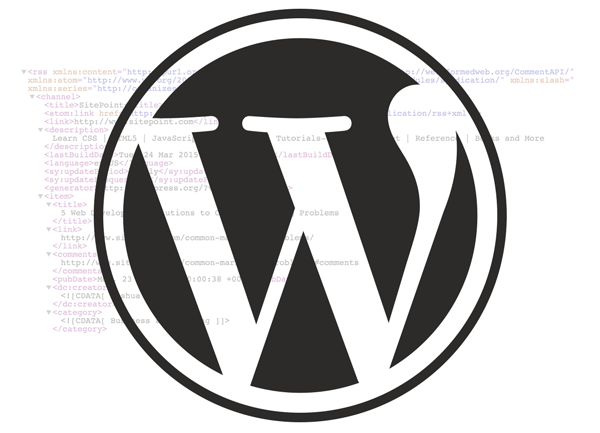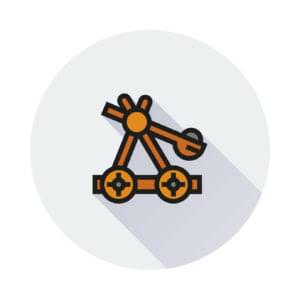Speeding up your work process should be one of your top priorities. Simply put, if you do more work in less time, then you will have more time to work on more projects, study and rest.
WP-CLI is one of the command line tools specifically made to manage your WordPress websites through the command line. With a few simple commands, you can manage WordPress without even needing to login to your WordPress admin and navigate through the pages.
 In this tutorial, we’re going to learn exactly what WP-CLI is, how to install it and an overview of the basic commands of this tool.
WP-CLI will be particularly useful if you are a WordPress developer, System Administrator or run a business built around WordPress. This command line tool will greatly help you do more in less time. For example, taking backups, updating WordPress and plugins, publishing content and querying databases can be accomplished relatively quickly.
In this tutorial, we’re going to learn exactly what WP-CLI is, how to install it and an overview of the basic commands of this tool.
WP-CLI will be particularly useful if you are a WordPress developer, System Administrator or run a business built around WordPress. This command line tool will greatly help you do more in less time. For example, taking backups, updating WordPress and plugins, publishing content and querying databases can be accomplished relatively quickly.
Requirements of WP-CLI
To install WP-CLI, make sure you have a hosting account with SSH access. Most shared hosting providers do not give you access to SSH. Providers like DigitalOcean, Linode and AWS are ideal for this if you love to spin up your own servers. Other requirements are basic:- PHP 5.3.2 or later.
- WordPress 3.4 or later.
- UNIX like environment like Linux.
How to Install WP-CLI
Step 1
First connect to your server’s command line through SSH. You can install the latest version of WP-CLI using the cURL or wget command. The WP-CLI installation file is available as a phar file and the latest version can be found at: https://raw.github.com/wp-cli/builds/gh-pages/phar/wp-cli.phar Using the cURL command, type:curl -O https://raw.githubusercontent.com/wp-cli/builds/gh-pages/phar/wp-cli.phar
Step 2
Next, we will set the permissions to make it executable. Enter the following command:chmod +x wp-cli.phar
Step 3
Optionally, we can move wp-cli.phar to a folder and rename it to wp. This will help us use the WP-CLI commands by just typing ‘wp’ at the start of the commands. sudo mv wp-cli.phar /usr/local/bin/wp
Basic WP-CLI Commands
To keep it simple, we’re going to overview the basic WP-CLI commands. You can explore more commands here.Using the WP-CLI Help System
WP-CLI comes with a full help system that you can access by typing “wp help”, for example:wp help cache
NAME
wp cache
DESCRIPTION
Manage the object cache.
SYNOPSIS
wp cache <command>
SUBCOMMANDS
add – Add a value to the object cache.
decr – Decrement a value in the object cache.
delete – Remove a value from the object cache.
flush – Flush the object cache.
get – Get a value from the object cache.
incr – Increment a value in the object cache.
replace – Replace an existing value in the object cache.
set – Set a value to the object cache.
type – Attempts to determine which object cache is being used.
EXAMPLES
wp cache set my_key my_value my_group 300
wp cache get my_key my_group
Installing WordPress with WP-CLI
If you haven’t installed WordPress by using any other method on your server, then you can easily do so using WP-CLI commandwp core install. Along with that command we need to pass parameters such as URL, Title, Admin Username, Password and Admin Email.
wp core install --url="your_domain" --title="Blog Title" --admin_user="admin username" --admin_password="enter_your_password" --admin_email="enter_your_email"
Installing Themes with WP-CLI
Importing and installing themes is much quicker through WP-CLI than going into WordPress admin, searching and then activating it. It connects your server directly to the WordPress theme repository and imports the theme in a matter of a few seconds. For example, to install a theme like TwentyTen, we will use the following command:wp theme install twentyten
wp theme install p2
wp theme activate p2
Installing Plugins with WP-CLI
Just like the themes, plugins can also be installed right from the official repository. Installation is seamless and takes almost no time. For example:wp plugin install woocommerce
The above command will install the WooCommerce plugin on your website. To activate it, we will use the command:
wp plugin activate woocommerce
wp plugin deactivate woocommerce
Updating WordPress Core, Themes and Plugins with WP-CLI
Repetitive and often time consuming task of updating the WordPress core, themes and plugins can be easily carried out through the command line. To update the WordPress core to the latest stable release of WordPress, the command is:wp core update
wp core update --version=4.0
wp core update --version=3.9 --force
wp plugin update woocommerce
wp plugin update --all
wp theme update twentyten
wp theme update --all
Conclusion
WP-CLI is indeed a powerful tool that can be used to manage your WordPress sites through the command line. There are also many more commands to manage your database, take backups, manage posts, comments and WordPress multisite It definitely speeds up your tasks, and makes it really easy to manage the sites. Luckily, there are hosting providers that provide WP-CLI by default on their WordPress installations (you can find a maintained list here).Frequently Asked Questions (FAQs) about WP-CLI
What is the Importance of WP-CLI for WordPress Management?
WP-CLI is a powerful tool that allows you to manage your WordPress website from the command line. It provides a faster and more efficient way to perform tasks that would otherwise require navigating through the WordPress admin interface. With WP-CLI, you can install and update plugins, create and manage users, posts, and comments, and even perform database operations. It’s particularly useful for developers and administrators who manage multiple WordPress sites, as it allows them to automate repetitive tasks.
How Do I Install WP-CLI on Windows?
Installing WP-CLI on Windows involves a few more steps compared to Linux or Mac. You’ll need to install a Unix-like environment such as Cygwin or Git Bash. Once you have that set up, you can download the WP-CLI Phar file, make it executable, and move it to a directory in your PATH. Remember to regularly update WP-CLI to ensure you have the latest features and security updates.
Can I Use WP-CLI to Manage WordPress Multisite?
Yes, WP-CLI fully supports WordPress Multisite. You can perform tasks on the network level or on individual sites within the network. For example, you can install and activate plugins across all sites in the network with a single command, or create a new site within the network.
How Do I Update WP-CLI?
Updating WP-CLI is straightforward. You can use the command ‘wp cli update’ to update to the latest stable version. If you want to use a nightly build or a specific version, you can use the ‘–nightly’ or ‘–version=
What Are Some Common WP-CLI Commands?
WP-CLI includes a wide range of commands for managing your WordPress site. Some common ones include ‘wp plugin install’ to install a plugin, ‘wp user create’ to create a new user, and ‘wp post create’ to create a new post. You can use ‘wp help’ to get a list of all available commands and ‘wp help
How Can I Automate Tasks with WP-CLI?
WP-CLI can be used in conjunction with shell scripts to automate repetitive tasks. For example, you could write a script that updates all your plugins, creates a backup of your site, and then sends you an email when it’s done. The possibilities are virtually endless.
Can I Extend WP-CLI with Custom Commands?
Yes, WP-CLI is highly extensible and allows you to write custom commands. This is done by creating a PHP class that defines the command and its parameters, and then registering it with WP-CLI. This allows you to tailor WP-CLI to your specific needs and workflows.
How Do I Troubleshoot WP-CLI Errors?
WP-CLI provides detailed error messages that can help you troubleshoot problems. If you’re having trouble with a specific command, try running it with the ‘–debug’ option to get more information. You can also check the WP-CLI handbook and community forums for solutions to common issues.
Is WP-CLI Secure?
WP-CLI is as secure as the environment it’s run in. It doesn’t introduce any additional security risks to your WordPress site. However, because it provides powerful functionality, it’s important to ensure that only trusted users have access to it.
Where Can I Learn More About WP-CLI?
The official WP-CLI website and the WP-CLI handbook are great resources for learning more about WP-CLI. They provide detailed documentation on all aspects of WP-CLI, including installation, usage, commands, and development. You can also find tutorials and articles on various WordPress and developer blogs.
 Ahsan Parwez
Ahsan ParwezAhsan is an advocate of Open Source platforms specially WordPress. He is currently working at Cloudways as the WordPress Community Manager. In his free time he loves to discover new things in WordPress and loves to teach WordPress.





